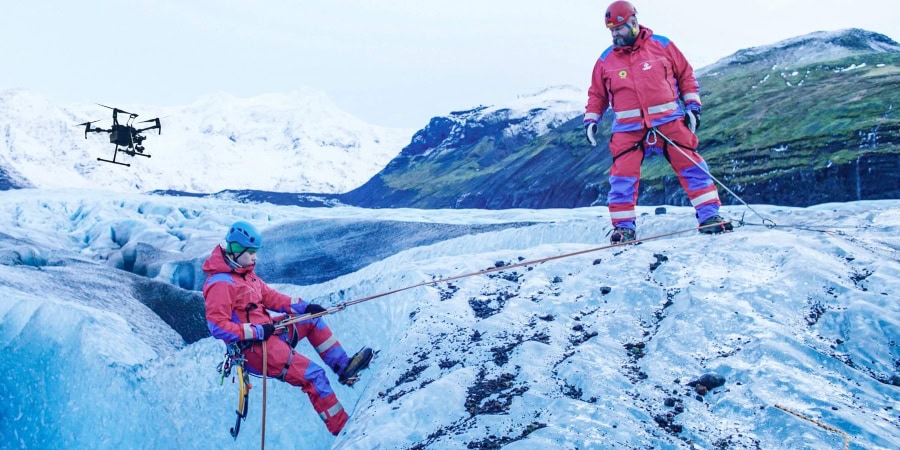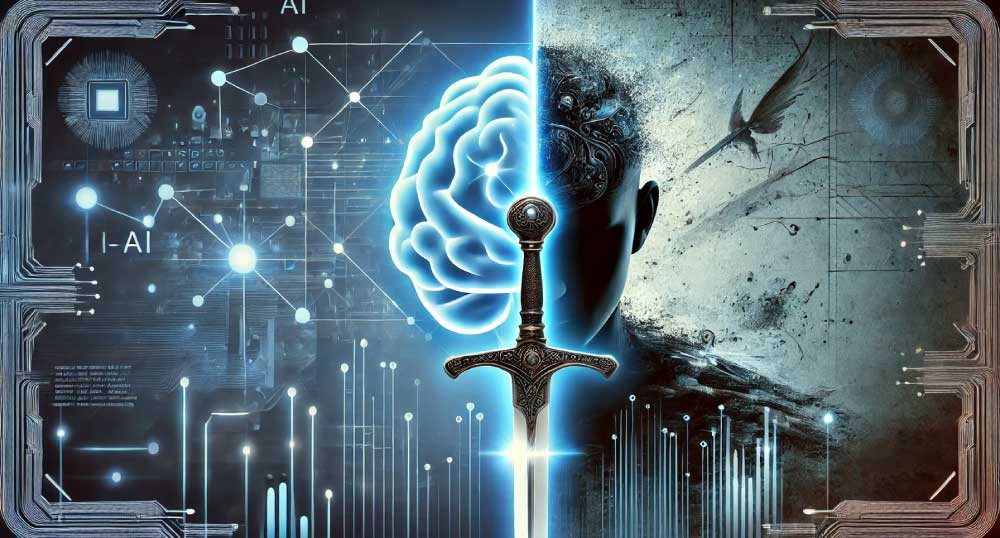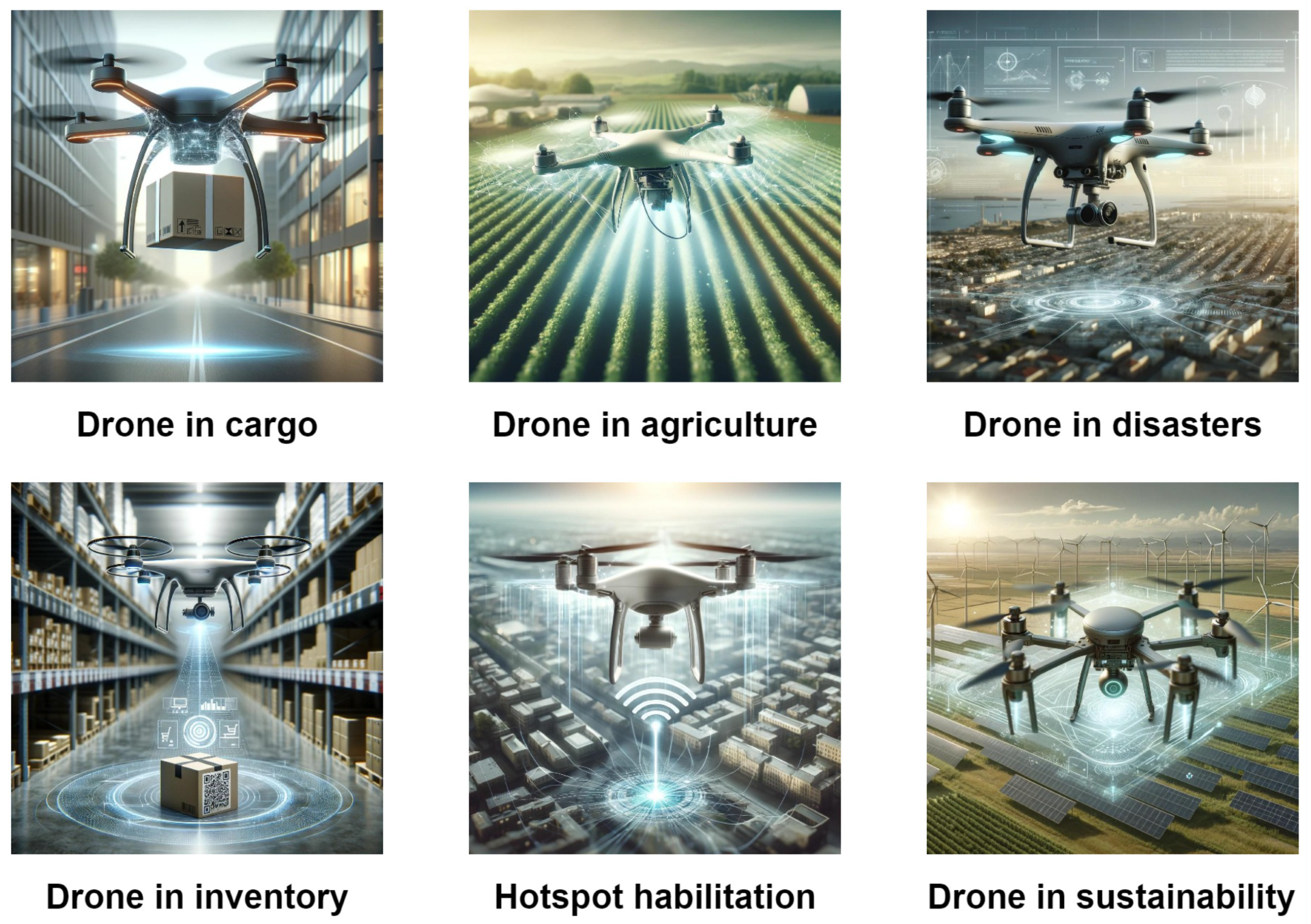
AI-Powered Drones: Revolutionizing Safety and Industry with Smart Technology
Drones used to just be aerial remote control cameras in the past. Nowadays, this have actually changed the way we get to view the world remotely. We’ve had them for decades, just for the sheer fun, or to take nice photos and videos remotely. But something is happening to those drones. Eventually, Artificial Intelligence, or AI, is becoming the central feature within it that makes it smart technology.
This AI-based drone comes with a synergy of smart technology synergy making them something beyond trendy gadgets. In fact, these are portraying the smart technology, intervening to perform challenging tasks. In fact, just imagine what they are able to offer worksites, or businesses in general. Also, smart drones are doing more than taking pictures. As a result, they are transforming safety management and streamlining countless different tasks. Now be ready to witness the smart revolution with the smart technology.

Source: AI-Powered Drone
The History of Drones: From Hobby to High-Tech Tool
Rise of Drones: Early Use and Limitations of this smart technology
To begin with, they were a shiny new toy to most people. They’d buzz around parklands or hit regular shots from a high vantage angle. Although, they did brilliant bird’s-eye shots, you had a person to run them every second. Consequently, operators should give much attentions to them.
However, these early drones simply did not have much ability to do on their own beyond being under direct control. Compared to that, they were simply taking orders. And they also could not handle bad weather or in heavy winds, where flying was not easy. But they could not sift through all their data after having collected them, so they left those data for humans to do later.
The Integration of AI: Unlocking New Opportunities

Accordingly, technology is arming drones with fantastic new brains through the use of AI. Let’s consider AI the brain of a drone. It encompasses computer vision to allow the drone to “see” and machine learning to allow the drone to “learn” from experience.
Consequently, a drone is able to identify objects on its own, just like a person or a defect in a building. They are able to navigate through a complex route without colliding. They can anticipate issues before they are triggered and send lots of data simultaneously. Those are what render them even more autonomous and effective tools.
Core Artificial Intelligence Technology Propelling Drone Innovation
Moreover, most of those brilliant techs are extending on the real capability of a AI-powered drone. LiDAR is one that creates super-detailed 3D maps using lasers, even through smoke or dust. Thermal imaging with a small assist from AI allows drones to detect heat signatures, best to find warmth or people. Sensor fusion takes data from dozens of varied sensors to generate a more complete understanding of what the world looks like. And edge computing allows this smart technology to do their math out there in mid-air, rather than sending it all back to a mother ship computer first.
Revolutionizing Safety with AI-powered Drones
Public Safety and Emergency Response
AI-powered drone technologies are doing a tremendous service to save us, particularly in times of need. They are soon revolutionizing emergency services at a rapid rate. The smart flyers are very lifesavers during times of need.
- Search and Rescue Operations: If a person is stranded in the middle of a forest or following a massive storm, the artificial intelligent drones equipped with special cameras, e.g., thermal cameras, are able to see a person much sooner than people on foot looking. They can identify patterns to efficiently find missing people. That typically reduces search time by 50% or more to get people home much earlier.
Disaster Tracking and Assessment: If you are facing a flooding or earthquake disaster situation, you need immediate information about damage. This smart technology, AI-powered drones, are capable of surveying across areas and immediately estimating damage. They have the capability of identifying risky areas and map areas where relief is required. This helps in saving lives by sending relief to the right areas at the right time.
- Support to Law Enforcement: Police can employ drones with AI to do all sorts of things. They can assist in managing crowds at events or reconstructing accidents. Drones give police an eye in the sky that can comprehend situations at a safe distance. That kind of support allows ground units to get more done and everyone to be safer.
Infrastructure Inspection and Maintenance with smart technology
Checking bridges, electric or gas lines, or buildings once took time and was hazardous. Drones with artificial intelligence make the necessary inspections safer and swifter. They identify issues that might be overlooked by human eyes.
Structural Integrity Analysis

The software is able to study sensor records and drone photographs to identify minor cracks or defects on large buildings. Smart drones closely inspect high tension towers or bridges. Smart sense analysis identifies minor defects which prove to be a big problem, maintaining buildings safe for a longer duration of time. For instance, a recent inspection on the Golden Gate Bridge detected minor cracks through the use of AI-driven drone surveys, which could be fixed at an early stage.
Predictive Maintenance
Even smart drones can look ahead to tomorrow. Computers can make educated guesses about which spots on a structure are going to fail next by reference to past inspection data and more scans. It lets crew members correct issues before they fail and sidestep expensive destructive outages at tremendous savings. It prevents surprises and boosts reliability.
Environmental and Gas Leak Tracking
There are specific drones that are pre-fitted with particular gas sensors to detect toxic gas leaks near industries or pipelines. The AI then interprets this data to determine exactly where a leak is occurring. They can even detect pollution levels and help keep our environment safe by being capable of detecting damage points in time.
Industrial Efficiency via AI Drones
AI drones aren’t just about safety; they’re also speeding up how companies do business. They add more smarts and efficiencies to routine activity, which means time and cost savings.
Precision Agriculture and Environmental Management
A drone with the smart technology can make a farming management more greener and smarter day by day. The aerial assistance is changing the way we plant our fields and cultivate our farms.
Crop Health and Yield Forecast
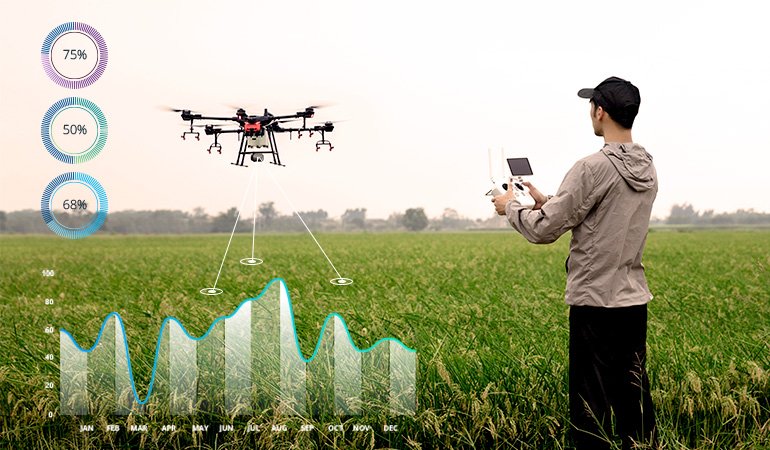
Drone sensors take particular photographs over fields. Artificial intelligence reads through those photographs to identify plants that are sick or lack water or nutrients. Farmers simply use what’s required to cut back on things and produce healthy plants. An Iowa farm increased its corn crop 15% with AI drone information to beat its fields.
Automated Sowing and Spraying
The drones sow seeds where they are supposed to or spray pesticides on weeds only. Artificial-intelligence drones control super-precise operations. What’s the result? Less waste and excess nutrients, healthier crops, and less environmental harm. It’s a leap for giant farms.
Livestock Monitoring and Control
Artificially intelligent agricultural drones can track animal herds in large paddocks. They can count how many animals there are, check on sick ones, or even assist in moving them from one paddock to another. Farmers save time and effort taking care of their farm animals.
Construction and Project Management
Constructing new buildings entails massive projects. AI drones are transforming construction sites to make them safer and more efficient projects. They give a clear, real-time image of what is taking place.
Site Surveying and Progress Monitoring

The use of drones allows rapid mapping of a whole building site and the construction of precise 3D models. This allows project planners to precisely know where everything is and how much material is required. They can also compare a daily drone scan to the project plan and monitor progress quickly and easily.
Quality Control and Safety Compliance
Artificial intelligence can monitor the drones to ensure workers are constructing things safely and correctly. It can alert possible dangers or uncover if rules are not being implemented on the site. It ensures everyone is safe and makes sure the building is meeting all its needs.
Logistics and Material Handling
Drones can quickly survey the quantity of material stacked at a site. Others are even capable of delivering small pieces or equipment to remote locations, saving wasted time.
The energy industry, from power plants to windmills, utilizes artificial-intelligence drones to manage things effectively and safely. In fact, they’re the hub of running our electrical grid.
Renewable Farm Maintenance
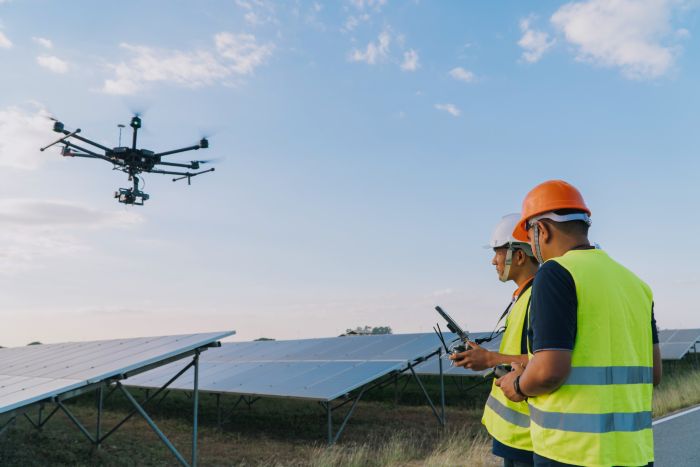
Large wind farm groups and large solar farms require constant monitoring. AI-powered drones hover above to determine which solar panels are faulty and whose turbine blades are broken. It fixes them instantly to deliver the maximum amount of energy. One such large solar farm in Arizona uses AI drones to determine faulty panels instantly to maintain energy levels at an optimal rate.
Pipeline as well as Power Line Inspection
Since, we have a few hundred miles of pipelines and electricity lines running through our nation, drone-based artificial intelligence can be deployed in such corridors and identify any damage, leak, or even unwanted trees growing too close. They catch small things before they become giant costly and dangerous issues.
Future Prospects and Challenges in AI-Powered Drones
These drones are great with AI with being smart technology, but we need to sort out a few issues with rules, privacy, and technology itself. However, their future is just incredibly bright.
Regulatory and Ethical Issues
With increasingly more solo drones available, there are points that need to be addressed. As a result, we need strict rules so everyone can be happy and safe.
- Rules and Airspace Management: There are busier skies and more drones. We require smart ways to manage all these flying objects so they will not get in the way of one another or other aircraft. Also, regulators are writing new regulations to maintain airspace security for all.
- Data Privacy and Security: These drones collect an immense volume of information in terms of pictures and videos. People want to know who looks at this information and what happens to this information. Accordingly, it is of utmost concern to all to protect this information and keep it confidential from cyber attackers.
- Public Opinion and Acceptance: There are individuals who may not be comfortable with drones all over the place once they are seeing things. Accordingly, gaining individuals’ trusts is essential. Moreover, illustrating ways under which drones are assisting us contributes to their massive acceptance.
Technological Challenges and Development
Regardless of how smart they are, however, AI drones have their limitations. As a result, engineers are constantly working to enhance them and expand their capabilities.
Battery Life and Flight Time in this smart technology
On the contrary, the drones don’t remain airborne all day on one charge. Batteries last only as long as they last. As a result, developers are constructing new batteries with upgradations. Their concern is to make batteries lasting longer and allowing drones to remain airborne to span more projects.
Robustness and Preciseness of AI Model
The AI of the drone must be extremely precise and flawless whether they are suspended over something or not. It is a design challenge to this day to ensure that the AI can cope with rainy or foggy conditions or with sunlight.
Human-AI Partnership
Furthermore, future drones are often comprised of human-AI partnerships. In fact, in order to conceptualize intuitive ways of getting humans to command and communicate with intelligent drones rather of focusing on just implying smart technology, design is needed. ‘The future views AI drones as true collaborators, not tools,” states Dr. Lena Khan, artificial intelligence pioneering scholar.

The Future of Artificial Intelligence Drones
The question is raised what is in the stores for drones and AI in the next. Their uses are expanding far beyond the smart technology what we are currently seeing. Then, get ready to be amazed at new methods they will help us.
Last-Mile Delivery Networks
Also, your package is going to be delivered to your front door by a drone, soon. AI drones will render quick, convenient deliveries the new standard. This will change the manner in which you are going to get anything from food to medicine.
Autonomous Drone Swarms
Picture drones swarming together become a collective entity. As a result, the “swarms” could be conducting large-scale tasks, such as surveying vast territory or putting out large blazes, all of which travel in concert.
AI-Driven Cleanup of the Planet
In addition, drones can eliminate pollutions one day. They could clean up polluted hotspots or even send out special operatives into polluted areas to clean up decimated ecosystems. Accordingly, this sounds like a thrilling Earth future.
In summary, the intelligent flying machines have really changed what is possible to a lot more than basic cameras to something critical. The age of artificial-intelligence drones began recently. Above all, what they will do will only grow larger and larger, helping to define the way we live and behave tomorrow and every day following.

